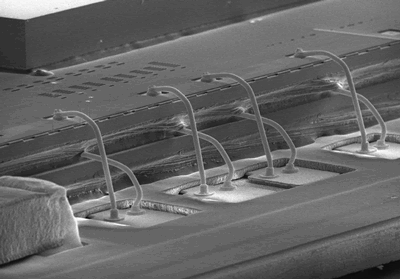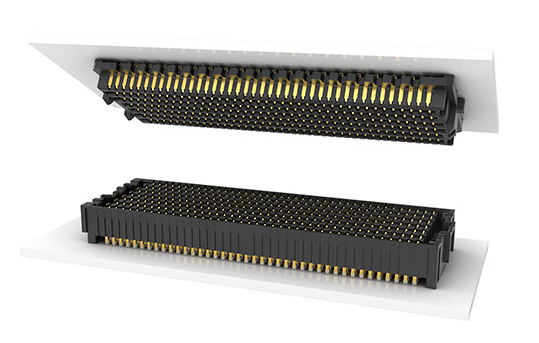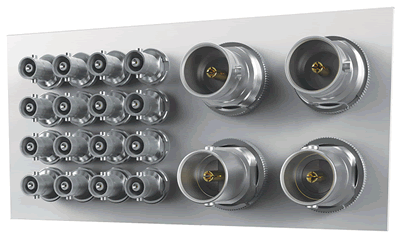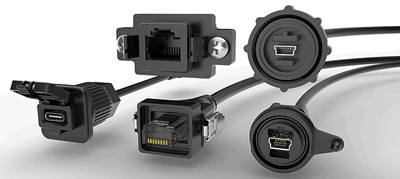Seven Levels of Interconnection (LOI) in Connector Packaging
When we integrate electronics into building and architecture environments, the number of connection points is no longer limited to the confines of a product package.
By William Garver, APEX Electrical Connector Consultants LLC
There are various Levels of Interconnection (LOI) in the electrical connector packaging field. At every interconnection point, at every level, there is a potential for failure, regardless of whether the connection is a permanent or a separable one. Therefore, selecting the most appropriate product to reliably serve this interconnection function is critical to the utility of the equipment. There is little disagreement about the lower levels of interconnection, Levels 0 to 4. However, as the connectivity leaves the internal equipment and enters the building wiring environment, additional levels may be identified. Experts associated with building or facility wiring architectures believe that there are seven commonly recognized levels.
Level 0: On-Chip Interconnection
This is a device-level interconnect that consists of integrating various elements such as resistors, transistors, capacitors, etc., on an individual chip. These connections are all permanent and are formed during IC fabrication. The functionality of these chip devices has increased exponentially over the last decade or two.
Level 1: Interconnections From the Chip to the Package
This level pertains to the attachment of the IC chip to the lead frame of the various types of chip carriers. The chips may be attached by various manufacturing techniques, including: wire bonding, tape automated bonding (TAB), and flip-chip bonding. These connections are permanent. Packaging types are plentiful and include the following: dual in-line package (DIP), pin grid array (PGA), ceramic leadless chip carrier (CLCC), small outline package (SOP), plastic leadless chip carrier (PLCC), quad flat pack (QFP), and ball grid array (BGA).

Ultra-fine pitch wire bond (photo courtesy of Samtec, Inc.)
Level 2: Printed Wiring Board (PWB) Interconnections
These board-level interconnections include the chip packages, connectors and other component attachments to the PWB. Typically, the components are either through-hole or surface mount versions and are soldered to the board either by hand, wave, or reflow soldering. Reflow soldering can be accomplished by infrared, induction, hot-bar or laser heating methods. Some connections employ the use of press-fit pin technology into plated through holes. Both permanent and separable connections to the PCB are employed.
Level 3 – PWB to PWB Interconnections Within the Equipment
This level consists of interconnections between PWBs, which include backplanes and mother/daughter cards. A designer has many options for interconnections in this level, which include both board-to-board (BTB) and wire-to-board (WTB) applications. As a rule, these connections are separable to allow for ease of manufacturing and replacement/repair.

High-density SEARAY™ board-to-board interconnects (photo courtesy of Samtec, Inc.)
Level 4: Interconnections Between Sub-Assemblies in an Enclosure or System
Various types of connectors are employed at this level and are used to connect other assemblies, usually to a PWB. These assemblies may be fans, sensors, disk drives, etc. The interconnections are mostly separable for manufacturing and replacement/repair ease.
Level 5: Input/Output (I/O) Interconnections
This is the first level at which the connectors are exposed outside of the equipment or at the I/O ports. Essentially, they are positioned at the outer plate of the box or system, ready to accept the external, Level 6, connections. They are used to connect audio, video, power, data, telephone circuits, etc. They often conform to specific industry standards, to assure that all producers design and manufacture connectors that can inter-mate to each others’ products. Generally, they are separable connections. This is also typically the level that both fiber optic and wireless interconnections are introduced.

High-density BNC RF panel interface (photo courtesy of Samtec, Inc.)
Level 6: External Interconnections Between Systems and/or Peripherals
These interconnections are often in the form of cable assemblies and are frequently governed by industry standards to assure interoperability between connectors from various suppliers. Examples include USB and RS-232 products. They are separable connections. Fiber optic and wireless links also play a role at this level.

USB and Ethernet IP68 sealed systems (photo courtesy of Samtec, Inc.)
Level 7: Interconnections at the Building Wall Plate
This level is usually not identified nor mentioned in the typical LOI discussion. However, an argument can be made for this level, since it is an integral part of the total wiring system, and the existence of defined interfaces are identified in the ANSI/EIA/TIA 568 and the ISO/IEC 11801 Standards. It is the initial connection to the total building wiring architecture. These connections are almost always separable.
Seven is not the end limit of interconnection points. There is the potential to identify and establish a few more levels in the building wiring architecture, which include interconnections such as the wiring closet that utilize punch-down blocks, cross connects, patch cords, etc., and the building entrance locations that often utilize surge and lightning protectors.
In summary, every interconnection point represents a potential for failure, regardless at which level in the system architecture it occurs. Each level and each application within a level has unique engineering, manufacturing, and application challenges of which are not immediately obvious to the equipment designer. Therefore it is imperative that the proper connector is chosen for each unique application to assure system reliability.
[hr]
 Bill Garver has 50 years experience in the connector industry, primarily in the management and direction of new product development and operational division management. He held the titles of division manager and director of development engineering at AMP. He developed new products throughout the full product life cycle, concept through introduction, for numerous industries, including consumer, commercial, computer, industrial, communications, and medical. Bill has vast experience with products for high-density, low-cost, insulation displacement, surface-mount, high-temperature, and environmentally sealed applications.
Bill Garver has 50 years experience in the connector industry, primarily in the management and direction of new product development and operational division management. He held the titles of division manager and director of development engineering at AMP. He developed new products throughout the full product life cycle, concept through introduction, for numerous industries, including consumer, commercial, computer, industrial, communications, and medical. Bill has vast experience with products for high-density, low-cost, insulation displacement, surface-mount, high-temperature, and environmentally sealed applications.







